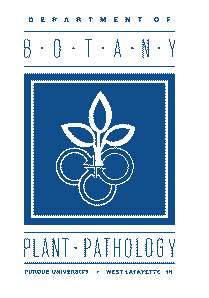
BP-13

Blossom end rot is a physiological disorder that occurs wherever tomatoes (and peppers) are grown. It is a noninfectious disease caused by low levels of calcium in tomato fruit and is not associated with soil contact or with damage to other plant parts. Blossom end rot occurs frequently where large fluctuations in soil moisture are allowed to occur.
Symptoms first appear as small, light brown or watersoaked spots at the blossom end of immature fruit. As affected fruits ripen, spots can enlarge rapidly to form dark, sunken, leathery lesions (Figure 1). Lesions are generally dry and can be as large as the diameter of the tomato fruit. A soft, wet rot will develop after affected areas of fruit are invaded by decay fungi and bacteria. Internal hardening, discoloration, and tissue collapse may be present without the characteristic external symptoms of blossom end rot.

Although blossom end rot is the result of a calcium deficiency in fruit, environmental conditions that interfere with uptake and availability of water and nutrients can contribute greatly to symptom expression. Such conditions include water stress (especially where wide fluctuations in soil moisture occur), excessive salinity, and root damage from infectious diseases. Excessive nitrogen fertilizer also can contribute to blossom end rot by promoting vigorous vine growth and depleting available calcium in the soil. It has been reported that calcium uptake is reduced where nitrogen is applied in the ammonium form (urea or anhydrous ammonia) instead of the nitrate form (calcium nitrate, ammonium nitrate).
Tomato varieties differ in their resistance to blossom end rot. In general, elongated pear or plum tomatoes used for processing and canning are most prone to this disorder (Figure 2). When environmental conditions favor blossom end rot, fruit of all varieties will show symptoms.

Incidence of blossom end rot can be reduced by following recommended soil management practices. A representative soil sample should be submitted for analysis each year so that proper amounts of fertilizer are applied and calcium-deficient soils can be amended. Soil and water should be checked for salinity before planting; fields high in salt content should be avoided. Adequate soil moisture must be maintained; extended periods of dry or saturated root zones should be avoided. Irrigation with 1 acre inch of water per week is usually sufficient. Mulching will help tomato gardeners conserve soil moisture.
Foliar application of a calcium chloride solution (5 pounds of 78% anhydrous calcium chloride per 100 gallons of water) has been reported to reduce blossom end rot in greenhouses. Excessive treatment will damage foliage. Such applications are reported to be ineffective when applied to field grown tomatoes. Foliage application of calcium chloride is not a substitute for proper soil management.
RR 12/93
Cooperative Extension Work in Agriculture and Home Economics, State of Indiana, Purdue University and U.S. Department of Agriculture Cooperating. H.A. Wadsworth, Director, West Lafayette, IN. Issued in furtherance of the Acts of May 8 and June 30, 1914. It is the policy of the Cooperative Extension Service of Purdue University that all persons shall have equal opportunity and access to our programs and facilities.